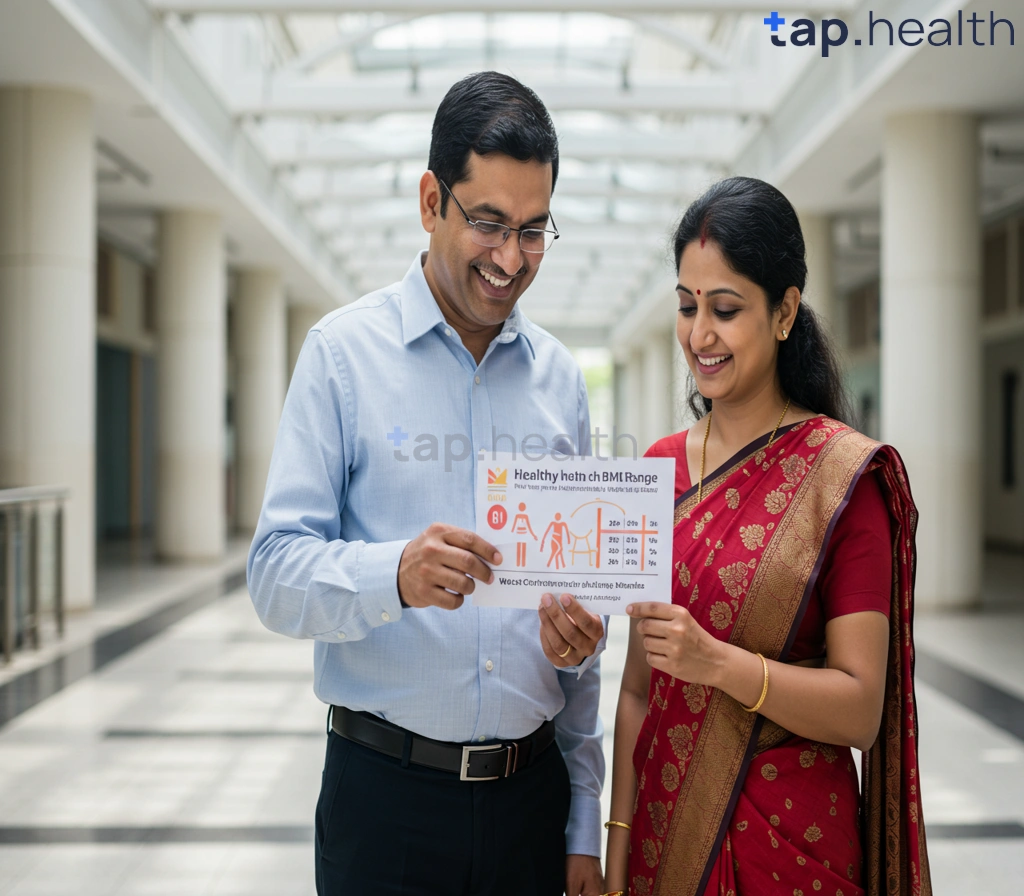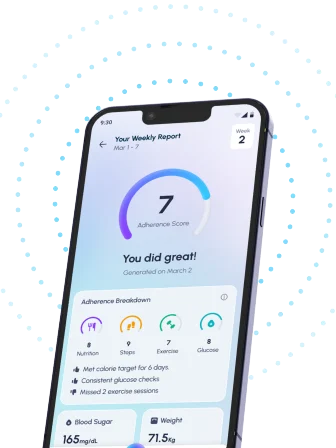Table of Contents
- Understanding Your Diabetes Risk: A BMI & Waist Guide
- Is Your Waist Size Increasing Your Diabetes Risk?
- BMI, Waist Circumference, and Diabetes: What’s the Link?
- Calculate Your Risk: BMI and Waist Measurement for Diabetes
- Prevent Diabetes: Your Guide to BMI and Waist Management
- Frequently Asked Questions
- References
Are you concerned about your risk of developing diabetes? It’s a common worry, and understanding your personal risk factors is the first step towards prevention or effective management. This blog post focuses on Understanding Your Diabetes Risk: BMI & Waist Circumference Guide, providing you with practical information and easy-to-understand tools. We’ll explore how simple measurements like your Body Mass Index (BMI) and waist circumference can offer valuable insights into your potential risk. Let’s dive in and empower you with knowledge to take control of your health!
Understanding Your Diabetes Risk: A BMI & Waist Guide
Diabetes is a significant health concern, particularly in India and other tropical countries. Understanding your risk factors is crucial for prevention and management. Women, in particular, face a heightened risk; studies show they have a 40% higher chance of developing heart disease compared to men with diabetes. This underscores the importance of proactive health measures.
Calculating Your BMI
Body Mass Index (BMI) is a simple calculation using your weight and height. A high BMI is a major risk factor for type 2 diabetes. You can easily calculate your BMI using online calculators readily available. Remember to use the metric system (kilograms and meters) for accurate results. For Indian and tropical populations, consider the specific BMI ranges for Asian populations as they may differ slightly from Western guidelines. Maintaining a healthy BMI is vital for reducing your diabetes risk. This is especially important given the strong link between Understanding the Link Between Diabetes and Obesity.
Measuring Your Waist Circumference
Waist circumference is another key indicator. Excess abdominal fat, indicated by a large waistline, is strongly linked to insulin resistance and increased diabetes risk. For women, a waist circumference above 80 cm (31.5 inches) and for men above 90 cm (35.5 inches) signals a higher risk. Regularly measuring your waist circumference can help you monitor your risk and make necessary lifestyle changes. This is particularly important in regions like India where lifestyle changes are often needed to manage this significant risk factor.
Taking Action
Regular exercise, a balanced diet rich in fruits and vegetables, and maintaining a healthy weight are crucial steps in preventing or managing diabetes. Consult a healthcare professional for personalized advice and regular checkups. Early detection and proactive management are key to preventing serious complications. Schedule an appointment with your doctor today to discuss your individual risk factors and strategies for improving your overall health. As you age, managing your diabetes effectively becomes even more critical. For insights and solutions, please refer to our blog on Managing Diabetes as You Age: Challenges and Solutions.
Is Your Waist Size Increasing Your Diabetes Risk?
The alarming statistic that 61% of people with diabetes are aged between 20-64 years should be a wake-up call, especially in Indian and tropical countries where lifestyle changes are rapidly impacting health. This highlights the urgent need to understand your risk factors, and your waist circumference is a crucial one. While genetics play a role, lifestyle significantly influences your chances of developing type 2 diabetes. A growing waistline is a strong indicator of increasing risk.
Understanding the Link Between Waist Size and Diabetes
Excess abdominal fat, often indicated by a large waist circumference, is strongly linked to insulin resistance. Insulin is crucial for regulating blood sugar; when your body becomes resistant, blood sugar levels rise, potentially leading to type 2 diabetes. This is particularly relevant in regions like India, where dietary changes and increasingly sedentary lifestyles are contributing to a rise in diabetes cases. Measuring your waist circumference is a simple yet powerful tool for assessing your risk. For men, a waist circumference above 90cm (35 inches) and for women, above 80cm (31.5 inches) indicates a significantly higher risk. These numbers might need adjustments based on ethnicity and other factors, so consulting a healthcare professional is recommended. For a more comprehensive understanding of body fat distribution, you might also want to explore Understanding Waist-Hip Ratio – Tap Health.
Taking Action to Reduce Your Risk
Regular exercise, a balanced diet rich in fruits, vegetables, and whole grains, and weight management are vital steps in reducing your risk. For individuals in India and tropical countries, incorporating traditional, locally sourced foods into a healthy eating plan can be beneficial. Focus on lowering your waist circumference through healthy lifestyle changes. Remember, a proactive approach to health is crucial. Consult your doctor or a qualified healthcare professional to assess your risk and create a personalized diabetes prevention plan. Early detection and intervention are key to managing or preventing this increasingly prevalent disease. While managing your waistline is crucial, it’s also important to understand other potential health implications of diabetes. For instance, you might find information on Does Diabetes Cause Cancer? helpful.
BMI, Waist Circumference, and Diabetes: What’s the Link?
Understanding your risk for developing diabetes, particularly in Indian and tropical countries, requires looking beyond just your weight. While Body Mass Index (BMI) provides a general picture, waist circumference offers crucial insights, especially considering the higher prevalence of abdominal obesity in these regions. A high BMI, often calculated as weight in kilograms divided by the square of height in meters, indicates excess body fat. However, someone with a seemingly normal BMI can still have a high waist circumference, signifying a dangerous concentration of fat around the abdomen. This visceral fat is strongly linked to insulin resistance and increased diabetes risk.
The Significance of Waist Circumference in Diabetes Risk
Waist circumference is a more precise indicator of health risk in many populations, including those in India and tropical countries. A larger waist circumference, often measured at the navel, suggests a higher accumulation of visceral fat. This fat releases substances that interfere with the body’s ability to regulate blood sugar, increasing the likelihood of developing type 2 diabetes. For men, a waist circumference above 90cm (35 inches) and for women above 80cm (31.5 inches) is generally considered high-risk. These thresholds might need adjustments based on specific ethnicities and populations within the Indian subcontinent and tropical regions.
Connecting the Dots: BMI, Waist Circumference, and Blood Sugar
The relationship between BMI, waist circumference, and blood sugar levels is complex. While a high BMI generally increases diabetes risk, a high waist circumference, even with a normal BMI, significantly elevates that risk. Remember, a HbA1c level below 5.7% is considered normal; 5.7%–6.4% indicates prediabetes, and 6.5% or higher suggests diabetes. Regularly monitoring your BMI and waist circumference, along with getting your HbA1c levels checked, is crucial for early detection and prevention. This is especially important given the link between excess abdominal fat and conditions like The Link Between Diabetes and Fatty Liver. Consult your doctor or a qualified healthcare professional for personalized advice and guidance, especially if you are concerned about your diabetes risk. They can help determine your individual risk factors and recommend appropriate lifestyle modifications and screenings. Understanding how weight loss impacts blood sugar can also be beneficial; learn more in our article on Weight Loss and Blood Sugar Levels: Simple Connection Explained.
Calculate Your Risk: BMI and Waist Measurement for Diabetes
Understanding Your Risk Factors in India and Tropical Countries
Diabetes is a growing concern globally, with projections showing a significant increase in cases in the coming years. The International Diabetes Federation’s data reveals a stark reality: In 2021, 536.6 million people (aged 20-79) lived with diabetes, a number predicted to rise to 642.8 million by 2030 and 783.7 million by 2045. This represents a concerning increase in prevalence from 9.8% in 2021 to a projected 11.2% in 2045. These statistics are particularly relevant in India and other tropical countries, where lifestyle changes and genetic predispositions can increase susceptibility.
BMI and Waist Circumference: Key Indicators
Two crucial indicators for assessing your diabetes risk are Body Mass Index (BMI) and waist circumference. A high BMI, calculated by dividing your weight in kilograms by the square of your height in meters, signifies excess body fat. Similarly, a large waist circumference, especially for those with a higher BMI, indicates a concentration of visceral fat around your internal organs, a strong risk factor for type 2 diabetes. While BMI provides a general overview, waist circumference offers a more precise assessment of abdominal obesity, particularly crucial in populations with higher prevalence of central obesity.
Taking Action to Reduce Your Risk
Regularly monitoring your BMI and waist circumference is essential, especially if you live in India or a tropical region and have a family history of diabetes. Maintaining a healthy weight through a balanced diet rich in fruits, vegetables, and whole grains, combined with regular physical activity, is crucial. Seek professional advice from a doctor or healthcare provider to discuss your individual risk factors and develop a personalized diabetes prevention plan. Early detection and proactive lifestyle changes can significantly reduce your risk of developing this chronic condition. Don’t delay – take charge of your health today. For those already managing diabetes, understanding how to manage related conditions like cholesterol is vital. Learn more about How to Manage Cholesterol Levels with Diabetes? And for individuals needing to gain weight safely while managing diabetes, check out How to Gain Weight with Diabetes Safely and Effectively – Tap Health.
Prevent Diabetes: Your Guide to BMI and Waist Management
Up to 80% of Type 2 diabetes cases, prevalent in India and other tropical countries, can be delayed or even prevented through simple lifestyle modifications. Understanding your Body Mass Index (BMI) and waist circumference is a crucial first step. A high BMI, indicating excess body fat, significantly increases your risk. Similarly, a large waist circumference, particularly for men, points towards abdominal obesity, a major diabetes risk factor. This is especially relevant in regions like India, where dietary habits and lifestyles can contribute to higher prevalence rates.
Understanding Your BMI and Waist
Calculating your BMI is simple: divide your weight in kilograms by the square of your height in meters. A healthy BMI generally falls between 18.5 and 24.9. For waist circumference, measure around your belly button. A waist circumference exceeding 90 cm for men and 80 cm for women suggests a high risk. However, these are general guidelines; consult your doctor for personalized advice, considering factors like age, family history, and ethnicity.
Managing Your Waistline and BMI
Effective management requires a holistic approach. Incorporate regular physical activity into your daily routine. Aim for at least 150 minutes of moderate-intensity aerobic exercise per week, such as brisk walking or cycling. This is particularly important in warmer climates typical of tropical regions. Pair this with a balanced diet rich in fruits, vegetables, and whole grains, while limiting processed foods, sugary drinks, and unhealthy fats. Small, consistent changes to your diet and exercise habits can make a significant difference in reducing your risk of developing type 2 diabetes. For more detailed advice on managing your condition, you might find our guide, 10 Proven Tips to Effectively Manage Diabetes | Simple Guide, helpful.
Taking Action in India and Tropical Countries
Prioritize regular check-ups with your doctor for monitoring and early detection. In India and other tropical countries, access to affordable healthcare and dietary education programs is crucial for effective diabetes prevention. Remember, adopting a healthy lifestyle is not just about preventing diabetes; it’s about improving overall well-being and quality of life. Make small changes today for a healthier tomorrow. Learning about effective management strategies can be empowering, and you can find more tips in our article, 10 Proven Tips for Effective Diabetes Management.
Frequently Asked Questions on Diabetes Risk
Q1. What is the link between BMI, waist circumference, and type 2 diabetes risk?
High BMI (body mass index), indicating excess body fat, and a large waist circumference, suggesting abdominal obesity, are major risk factors for type 2 diabetes, especially in tropical regions like India. Abdominal fat is strongly linked to insulin resistance.
Q2. How can I determine if my waist circumference is a cause for concern?
For women, a waist circumference above 80 cm and for men above 90 cm indicates a higher risk of type 2 diabetes. It’s important to note that these are guidelines, and individual risk factors vary.
Q3. What lifestyle changes can help reduce my risk of developing type 2 diabetes?:
Maintaining a healthy weight through regular exercise, a balanced diet rich in fruits and vegetables, and regular health checkups are crucial for prevention. Early detection and proactive lifestyle changes are key.
Q4. Are there specific BMI guidelines for Asian populations?:
Yes, BMI ranges for Asian populations may differ from Western guidelines due to variations in body composition. It’s best to consult with a healthcare professional for personalized assessment and advice.
Q5. What should I do if I am concerned about my risk of type 2 diabetes?:
Schedule a checkup with your doctor or healthcare provider. They can assess your individual risk factors, provide guidance on lifestyle modifications, and recommend appropriate screenings or management strategies.
References
- A Practical Guide to Integrated Type 2 Diabetes Care: https://www.hse.ie/eng/services/list/2/primarycare/east-coast-diabetes-service/management-of-type-2-diabetes/diabetes-and-pregnancy/icgp-guide-to-integrated-type-2.pdf
- Your Guide to Diabetes: Type 1 and Type 2: https://www.niddk.nih.gov/-/media/Files/Diabetes/YourGuide2Diabetes_508.pdf




